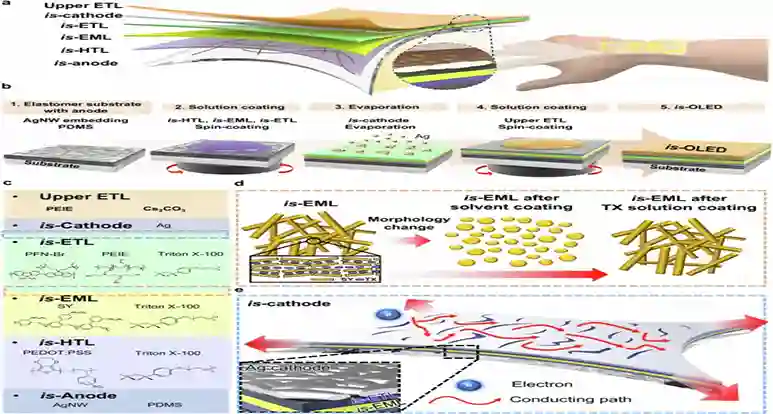Researchers at Yonsei University in Korea have developed a new flexible OLED display that can stretch up to 70% and maintain 80% brightness after 300 stretching cycles.
The future of flexible electronics is getting brighter thanks to a new technology developed by researchers at Yonsei University in Korea. A flexible OLED display, made with a sequential coating technique, promises exceptional performance in terms of stretchability and durability, paving the way for a new generation of wearable, bendable and adaptable devices.
Conventional flexible OLEDs, also known as intrinsically stretchable OLEDs (is-OLEDs), often suffer from reduced performance issues due to incompatibilities between the solvents used and the lamination process, which can cause defects and delamination. The new technique developed by Korean researchers overcomes these obstacles, offering a display that can stretch up to 70% and maintain 80% brightness even after repeated stretching cycles, with a peak of 3,151 nits and an efficiency of 5.4 cd/A.
The new sequential coating technique represents a significant improvement over the complex lamination techniques used to date. This approach should greatly simplify the manufacturing process, making it more accessible and potentially cheaper for the mass production of next-generation flexible OLED devices.
The researchers believe that further improvements in performance are possible, for example by choosing different cathode materials and optimizing the thickness and composition of the ETL (Electron Transport Layer) material. This paves the way for a future in which flexible OLED displays can achieve even higher levels of brightness and efficiency.
The new technology developed by Korean researchers represents a major step forward in the field of flexible displays. The ability to create stretchable and durable OLED displays opens up a wide range of applications, from wearable devices to foldable displays for smartphones and tablets to new lighting and signage solutions, so much so that they have become the subject of industrial espionage.





